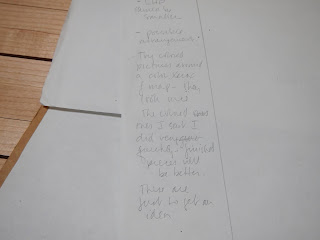Every so often, I get hung up on a fly. This time around, it's the Nepisiguit Grey (note well the Canadian spelling of the G-word!). I don't believe I'd ever even heard of the Nepisiguit River until Paul and Stephanie Elson and Howie Gould took me fishing there one lovely Autumn day a few years ago. More about the river in this post from 2017, if you're interested: https://theriverscourse.blogspot.com/2017/11/miramichi-salmon-camps-fall-2017.html.
There is another spelling, "Nipisiguit", that based on an hour of googling, looks to be an old French way of spelling. I just bought a book, Salmon Fishing on the Nipisiguit - 1874, that lends a little credence to the older spelling. Modern maps all seem to spell it Nepisiguit. Several fly tying books, notably Farrow and Allen's Flies for Atlantic Salmon and Poul Jorgensen's Salmon Flies - Their Character, Style and Dressing use the Nipisiguit spelling, as does Joseph Bates, Jr. in The Art of the Salmon Fly.
Historian David Ledlie, in an article he wrote for The American Fly Fisher (Fall 1976) concerning Dean Sage and his writing of the Ristigouche and its Salmon Fishing found this memo from Sage to his publisher regarding the spelling: "Nepisseguit - Hickman spells it Nepisaguit and it is also spelled Nepiseguit and Nepisiguit, but my spelling is I think the most common and most in accordance with the pronounciation."
Others, including Bates and Richards Fishing Atlantic Salmon - the Flies and the Patterns and the monumental Hardy's Salmon Flies - Patterns from the Fly Tying Department 1883-1969 use the Nepisiguit spelling.
In its earliest form, it's a beautiful fly - this one tied by Tyler Thompson. Click on the pics for a larger version!
So who developed the Nepisiguit Grey? Bates and Richards note, "No authentic information as to where, when or by whom the
Nepisiguit Grey was originated, this evidence evidently being lost in antiquity." In his
Atlantic Salmon Flies, Jacques Heroux notes that the pattern was created by Ira Gruber. I doubt that very much; the fly was around before Gruber's time, and looks unlike any other fly that notable fly developer created, particularly the complicated wing. I am in communication with Gruber's grandson to see if he can shed some light on the subject.
New note: Ira's grandson, also Ira, doubts that the fly was originated by his grandfather (pers. comm). Also of note, a book he is writing about his grandfather is currently at the copy editor.
Enter Dewey Gillespie and his
The Fly Tyers of New Brunswick - the 2nd Time Around (
http://www.eskapeanglers.com/deweysbook/dewey.pdf). Dewey introduces us to David Arthur LaPoiinte, a gentleman that owned a Fredericton, NB barbershop in the 1920's, and who moved to that hotbed of Miramichi fly tying, Atholville, NB in 1935 where he became more of a fly tyer than a barber. He began teaching fly tying; Clovis Arseneault of Rusty Rat fame was one of his students.
Dewey credits LaPointe with creating the Nepisiguit Grey. For the sake of argument, let's say LaPointe developed the hairwing Nepisiguit Grey. He gives the dressing as follows:
Tag: Oval gold tinsel
Tip: Yellow floss
Tail: Golden Pheasant crest
Butt: Peacock herl
Rib: Oval gold tinsel
Body: Gray underbelly fur of a Muskrat
Throat: Grizzly hackle
Wing: Black Bear hair
Head: Black
In
Hardy's Salmon Flies - Patterns from the Fly Tying Department 1883-1969, when discussing the Nepisiguit Grey, LaPointe was again given credit for the hairwing version:
"This was a pattern that adapted very well, largely because of its colouring, to a hair wing dressing, and the notebooks have a description, said to be taken from an illustration of one dressed by the American fly dresser LaPointe."
That's the most common dressing for the hairwing I've found. Looks something like this:
In Bates and Richards'
Fishing Atlantic Salmon, they list a simplified feather wing recipe:
Tag: Fine oval silver tinsel or wire and bright yellow floss
Tail: Golden Pheasant crest
Butt: Two or three turns of peacock herl or black wool
Body: Medium gray wool, not built up
Rib: Fine oval tinsel
Throat: Barred rock (grizzly) hackle feather
Wing: In four sections, two on each side, bronze mallard
Head: Black
Looks a bit like this:
Together:
Those flies are part of a shadow box I created for the latest MSA online auction:
I found an old mining map of the river:
and through a little work with Paint, I was able to get this:
This whole deal pretty much started with a little favor I was doing for my friends up in Centreville, NB, Lottie and Stephen Nye. They wanted to give a present to friends with a place on the Nepisiguit. Stephen, like Tyler Thompson in the first pic in this blog post, has tying skills WAY above my paygrade, first tied the classic version from Hardy's recipe:
Tag: Silver and 152 yellow silk
Tail: Golden Pheasant crest
Butt: Black Ostrich
Body: Grey monkey fur (!!!!)
Ribs: Silver
Hackle: Grizzly cock down body and at shoulder
Wing: Golden pheasant tippet and golden pheasant tail, broadish strips of grey peacock wing feather and bustard, slip of summer duck and blue swan, brown mallard over.
They do list another wing variation. You'll have to spend the 100 bucks for the book to get it, lol!
Here's what we ended up with for the gift the Nyes are giving (at least I THINK they're still giving it, lol) to their friends:
All that and we still don't know who designed the first Nepisiguit Grey!
Cheers, and get your shots!




















